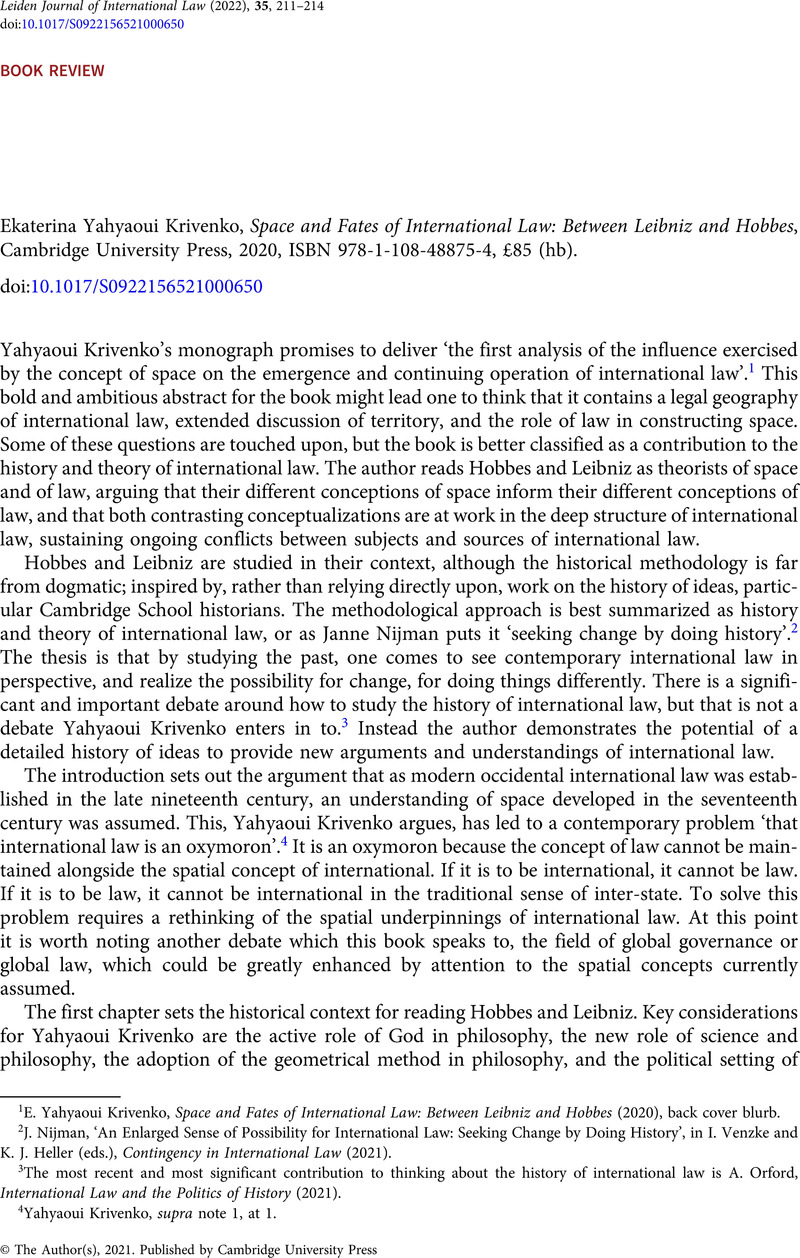No CrossRef data available.
Published online by Cambridge University Press: 16 November 2021

1 E. Yahyaoui Krivenko, Space and Fates of International Law: Between Leibniz and Hobbes (2020), back cover blurb.
2 J. Nijman, ‘An Enlarged Sense of Possibility for International Law: Seeking Change by Doing History’, in I. Venzke and K. J. Heller (eds.), Contingency in International Law (2021).
3 The most recent and most significant contribution to thinking about the history of international law is A. Orford, International Law and the Politics of History (2021).
4 Yahyaoui Krivenko, supra note 1, at 1.
5 Ibid., at 25.
6 Ibid., at 26.
7 Ibid., at 86.
8 K. Aoki, ‘Space Invaders: Critical Geography, the Third World in International Law and Critical Race Theory’, (2000) 45 Villanova Law Review 913.
9 J. T. Gathii, ‘Geographical Hegelianism in Territorial Disputes Involving Non-European Land Relations: An Analysis of the Case Concerning Kasikili/Sedudu Island (Botswana/Namibia)’, (2002) 12 LJIL 581.
10 V. Nesiah, ‘Placing International Law: White Spaces on a Map’, (2003) 16 LJIL1.
11 T. Mahmud, ‘Colonial Cartographies, Postcolonial Borders, and Enduring Failures of International Law: The Unending War Along the Afghanistan-Pakistan Frontier’, (2010) 20 Brooklyn Journal of International Law 1. T. Mahmud, ‘Law of Geography and the Geography of Law: A Post-colonial Mapping’, (2010) 3 Washington University Jurisprudence Review 64.